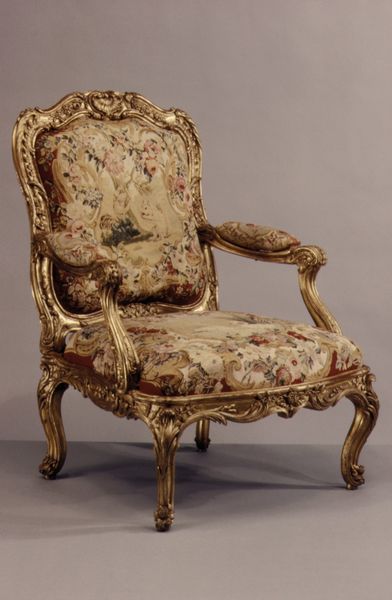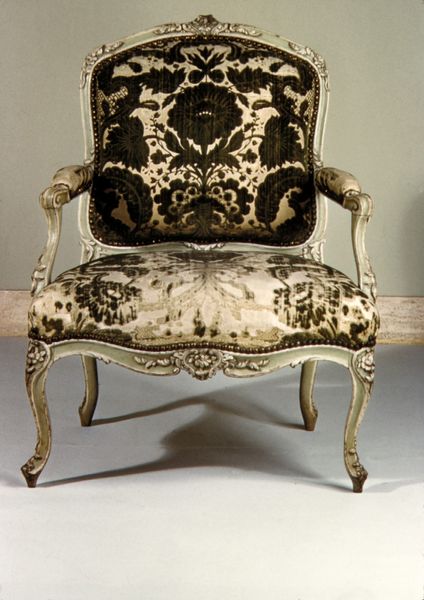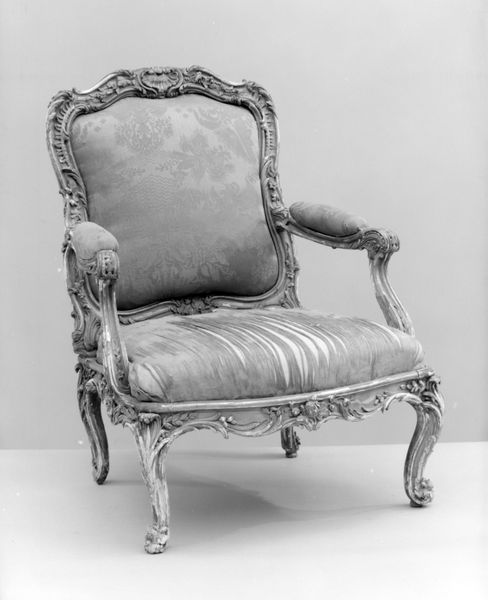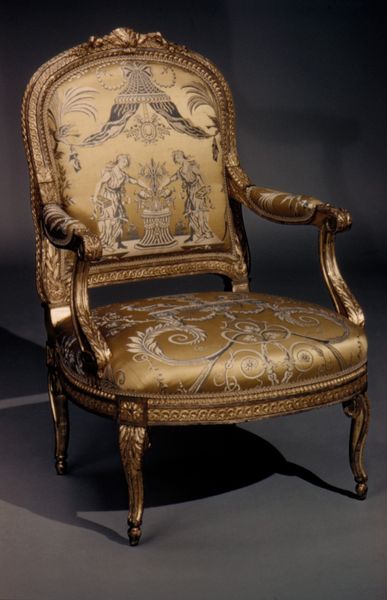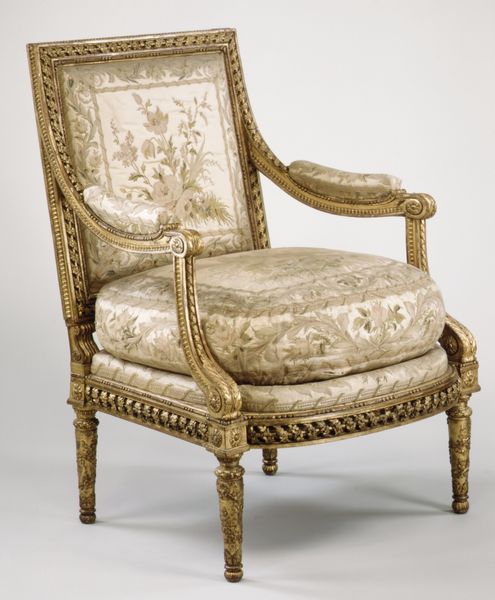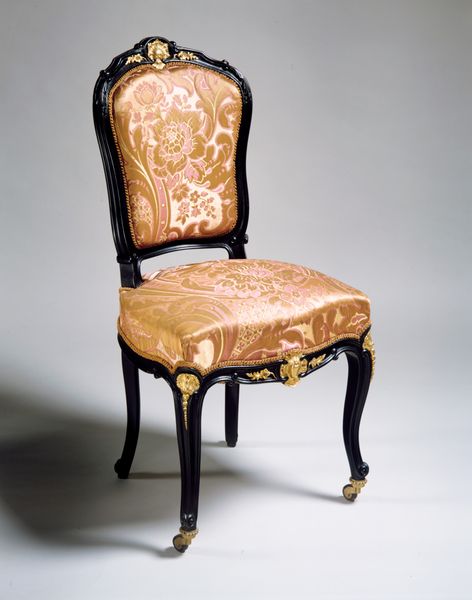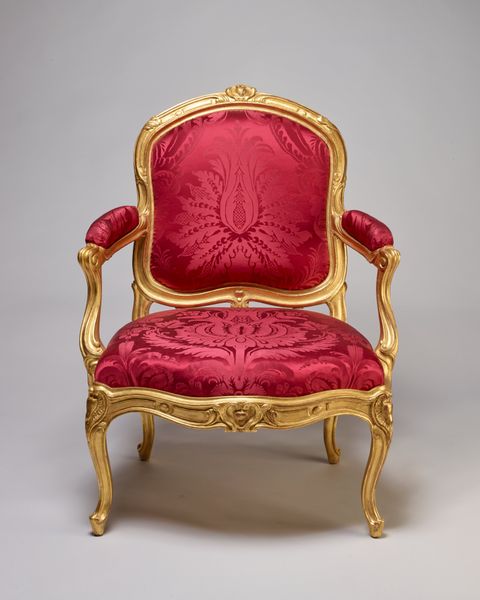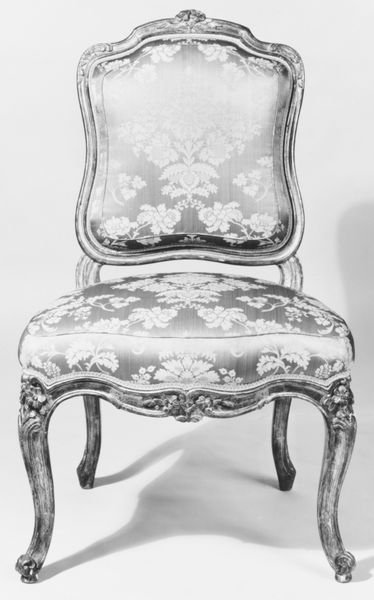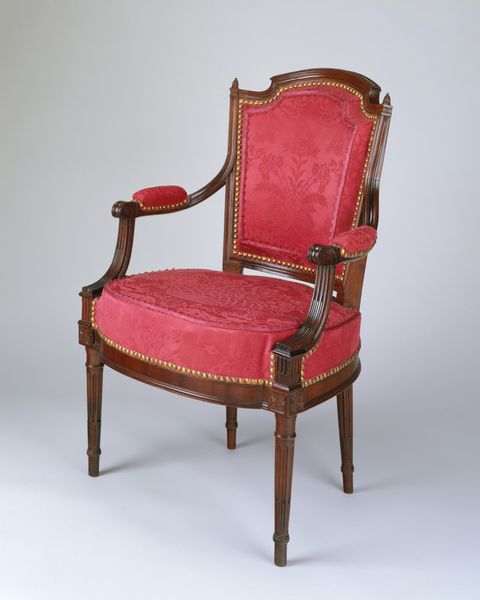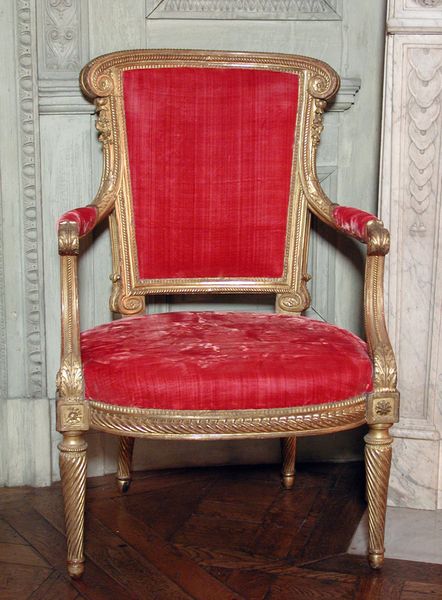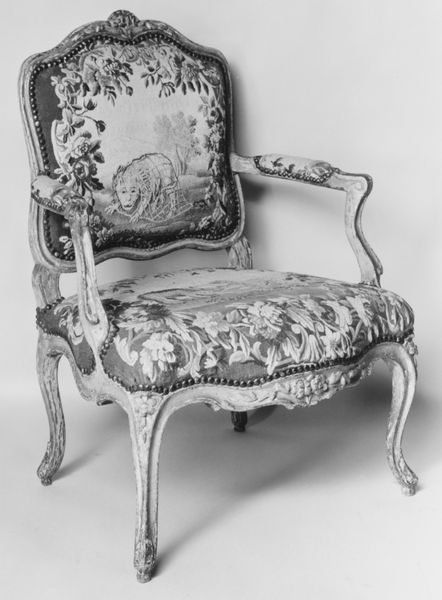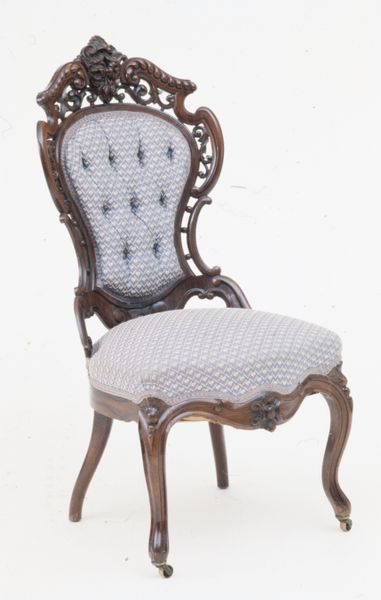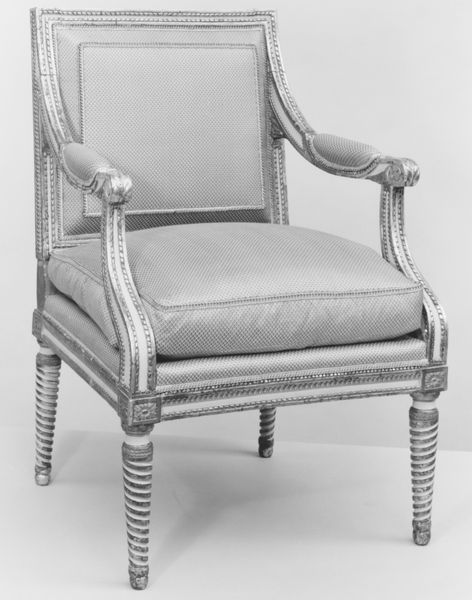
Dimensions: Overall: 36 1/8 × 23 × 20 3/4 in. (91.8 × 58.4 × 52.7 cm)
Copyright: Public Domain
Curator: It seems we are looking at an armchair from a set, created sometime between 1775 and 1795 by Georges Jacob. Editor: The first thing that strikes me is the luxurious materiality and its color; the peach-colored velvet paired with the gold gilding really screams opulence. But, beyond the beauty, I wonder about who was *allowed* to sit in this chair, given the social hierarchies of the time? Curator: An excellent point. The manufacture of such an item tells us volumes. Consider the skilled labor involved – from the carpentry and carving of the wooden frame to the upholstery work. It represents a significant investment of resources. Was this piece mass produced or the result of workshop collaborations between specialists, each responsible for individual aspects? Editor: Absolutely. This chair speaks to larger narratives about class and labor and consumer culture. Who had access to these luxurious items? Was this a commission, showcasing the owner's social standing, wealth and perhaps also their political affiliation? The Rococo style suggests associations with monarchy, elite networks of power, perhaps also shifting and evolving aesthetics amid a society on the brink of upheaval. Curator: Rococo is visible here in the curves and the delicate carving details. But look closely at the wood grain, the joints, the way the frame is constructed. These are choices, decisions made in the creation of a functional object elevated to art. And how it speaks of craftsmanship passed down from masters to apprentices. Editor: Right, there’s definitely the contrast in Baroque design and the socio-economic structures of its production and consumption in its era. One can’t ignore this context, or even consider a mere art history. By interrogating historical sources, like receipts, wills and inventories, we begin to unravel the layers of meaning imbued within this seemingly simple armchair. We discover more nuanced and politically rich and culturally relevant histories. Curator: By paying close attention to the materiality, we move away from simply aesthetic appreciation and focus on understanding its origins, modes of production, distribution, and use. What types of wood were utilized? Where did it originate? What were the environmental impacts involved in logging or shipping the raw materials? These all add another dimension to our experience. Editor: That’s how a single chair can be far more than just somewhere to sit; instead, it becomes a nexus for interrogating histories of labor, class, and political ideologies. We are always looking through lenses of intersectionality and contemporary cultural theory. Curator: And by exploring its physical makeup and method, we connect the past to the present, prompting further engagement with social implications across history. Editor: Yes, absolutely. It transforms a once-static artwork into a launchpad for conversations about equity, visibility, and challenging institutional structures.
Comments
No comments
Be the first to comment and join the conversation on the ultimate creative platform.
